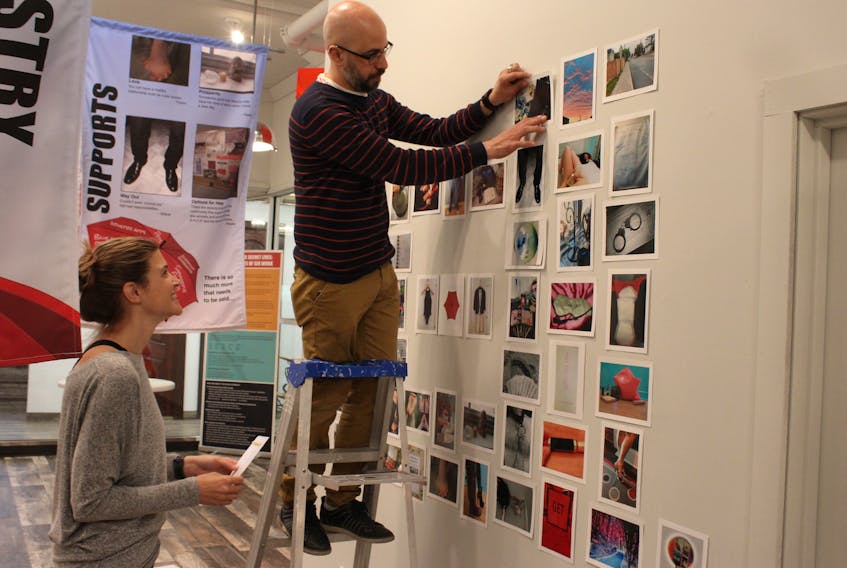ST. JOHN'S, N.L. — A new art exhibit in downtown St. John’s aims to give a voice to sex workers across Newfoundland and Labrador.
“Let Us Stop Living Secret Lives: The Visual Story of Sex Work” opens at the Newfoundland and Labrador Craft Council Gallery at 245 Duckworth St. on Saturday evening and runs until May 30.
“It’s about understanding the life experiences of people who are involved in sex work, sex workers that are living and working in Newfoundland and Labrador,” said Kathleen Sitter, an adjunct professor at Memorial University, who has worked on the project from the beginning.
The exhibit is part of a two-year, nationally funded study on the lives of sex workers across the country. When it finishes in St. John’s, the exhibit will tour to Corner Brook in August.
The project followed 20 sex workers from across the province, who took photos to represent the difficulties faced by those in the industry.
The sex workers who contributed to the project are women, transgender people, and non-binary people.

“We worked together as a group, first individually, then as a group. They took photographs about their experiences across five areas: the industry, law, health care, support services and basic needs,” Sitter said.
“In these groups, they start to explore ways to communicate that and create visual stories. What came out of this amazing work is a compilation of 23 panels.”
“My job started when the sun went down. Never knew what the darkness would bring,” wrote “Willow,” on a picture of a sunset over St. John’s.
Often, the terminology surrounding the industry gets confused. The Safe Harbour Outreach Project (SHOP.) says “sex work” encompasses “a range of erotic labour and sexual services, consensually working alone or with others, outdoors or indoors.” The word “consensual” is key in the definition, as it encompasses anyone willingly employed in the industry.
Sex work is not sexual exploitation, in its ideal form.
“Sexual exploitation is committed through abuse, coercion and manipulation in order to benefit from another person's sexuality for the purpose of sexual gratification, financial gain, personal benefit or advantage, or any other non-legitimate purpose,” reads the definition from SHOP.
Human trafficking involves the sexual exploitation of others through threats of violence, coercion and fraud (among other means), which could lead to sexual exploitation of minors and even slavery.
The three are distinct, with only sex work encouraged by activists.
Sitter says she hopes people can learn from the exhibit that sex workers are humans, with human rights.
“At the broadest level, it’s about raising awareness around the experiences of people in our community, really,” she said.
“It provides a level of education, the diversity of these experiences, and first-hand accounts, so it’s not filtered through academic articles. I think that’s the beauty of this work. It’s to raise understanding of people in our community. These are their stories.”
[email protected]
Twitter: DavidMaherNL









